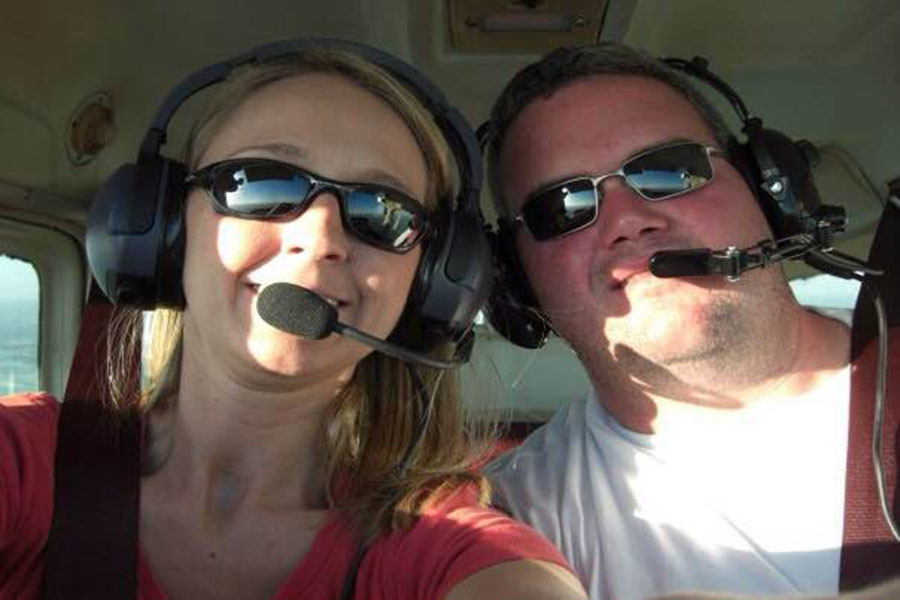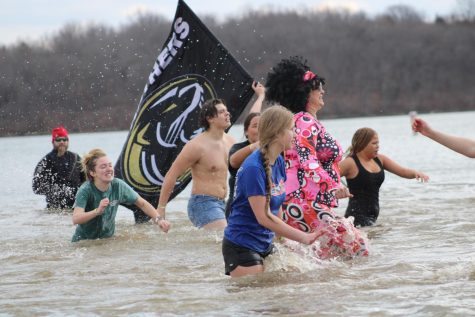Spanish teacher to flight instructor
It is true: teachers do not actually live under their desks and do nothing but teach students and grade papers. In fact, one teacher here at Ray-Pec knows this more than anything.
Since 2004, Advanced Spanish I and II teacher Valerie Green has been a flight instructor. She discovered her passion for flying as a child and began her journey in the sky at the age of 15 years old, when she attended her first flight lesson.
“I realized that I wanted to be a pilot after taking a week-long rafting trip through the Grand Canyon. At the end of the trip, we were helicoptered to the rim of the canyon and then we flew in a small plane back to where we had started. Our pilot was a young woman and she let me fly some because she was a flight instructor. It was during this airplane flight that I was hooked!” said Green.
While still in high school, Green was forced to balance everyday stresses of a teenager with her newfound passion up until her college years, where she double majored.
“I actually attained my Private Pilot License just before I got my driver’s license. After getting my Private License, I got a job working at the flight school at the Spirit of St. Louis Airport where I was taking lessons. During my sophomore, junior, and senior years of high school, I worked part-time at the flight school, continued my flight lessons, ran track and cross-country and took advanced classes. I soon earned my Instrument rating… I continued to work on building up my flight hours and after I graduated from high school, I went to Central Missouri State University to double major in Aviation Technology and Spanish. There, I earned my Commercial Pilot’s License, Multi-Engine rating and became a CFI (flight instructor),” said Green.
Becoming a flight instructor requires one to work through different rankings and establish multiple licenses.
“The different levels you work through to get to be a flight instructor are Private, Instrument, Commercial, Multi-engine, CFI. My official rank is that I am an Instrument and Multi-Engine rated Commercial Pilot with a CFI, which stands for Certified Flight Instructor. This means that I can fly in poor weather conditions, fly single and multi-engine airplanes and that I can fly for hire, whether instructing or otherwise. To become a Flight Instructor, you have to achieve all of the licenses and ratings below it and also pass a written , ground and a flight checks with an examiner from the FAA, which is the Federal Aviation Administration,” said Green.
Green is responsible for teaching many maneuvers while instructing a lesson, starting from the ground, to when they are in the sky and finally, when they land.
“Usually, before you ever get into the airplane to actually fly, you talk about what you are going to do on the ground. Then, you pre-flight the airplane, this means that the student checks over the airplane, telling the instructor what he/she is doing as he/she does it. Once in the airplane, I almost always let students do the takeoff, even the very first time. A basic takeoff is one of the easiest maneuvers to learn, believe it or not. This gives people what flight instructors call “the bug” to hook them onto the exhilaration of flying,” explains Green, “Lessons start off fairly easy and progressively get more difficult as you go. After takeoff, I then teach students how to make basic turns around a point on the ground like their house, S turns around a road and other handling maneuvers. Even basic turns, which sound easy, can sometimes be difficult for some students to get at first, because it is not like just turning the wheel in your car. To prepare them for their check ride, they have to practice completing these maneuvers within a set of precision standards. After that lesson, we practice previously learned skills every lesson afterwards and eventually get into the more difficult maneuvers like taking off and landing on a soft ground or field, taking off and landing on a short field like a runway or obstacle and also emergency procedures.”
Although she can not do this full time because of her teaching job, it is still very much present in her life. Her husband is a pilot and a manager at the Harrisonville airport, and the couple recently took their one year old son on a flight in hopes to show him one of their true passions in life.







